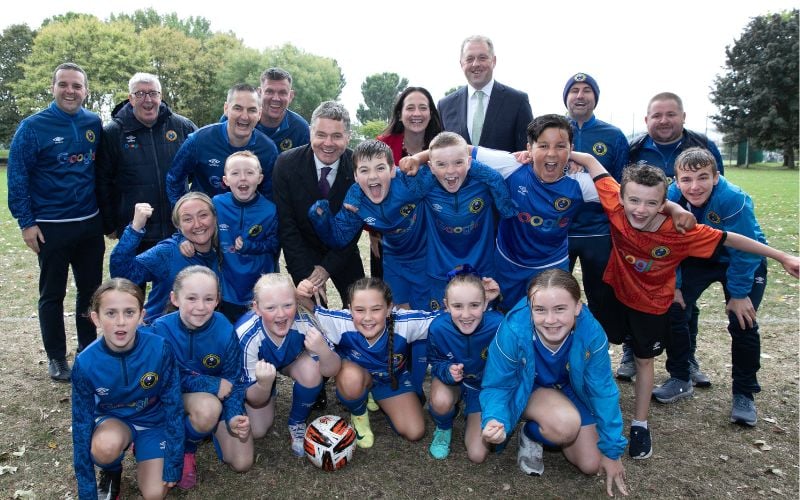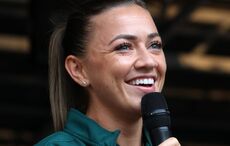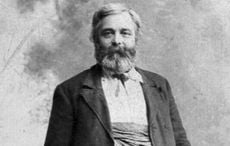After Anquan Boldin led the Baltimore Ravens to a relatively easy victory in Foxboro to vault his team into the Super Bowl, it was clear that the New England Patriots had at least one fatal flaw on their defense. Not only was the Patriots' secondary lacking talent and depth, but most notably it had no toughness.
Without Aqib Talib, Boldin was able to overpower Devin McCourty, Alfonzo Dennard and Kyle Arrington in any kind of tight coverage, while Steve Gregory, McCourty or Tavon Austin lacked the physicality to intimidate him as he worked over the middle of the field. Patrick Chung had that physicality, but lacked the coverage ability or intelligence to be trusted in coverage.
Toughness and character are prerequisites for championship sides in every team sport, after that game, it became clear that the Patriots were lacking both on the backend of their defense.
While the Patriots signed Adrian Wilson this off-season to bring that toughness and character, question marks still remain over what exactly he can still do. Prior to being released this off-season by the new regime in Arizona, Wilson had spent 12 years with the same franchise. He finished the off-season as a 33 year old starting safety who was perceived by some to have lost a step.
Wilson was never a superstar in coverage, but his coverage was always consistent while his run support and physicality is what made him a special player. Last season that run support fell off significantly. An overall Pro Football Focus rating of -2.4 for 2012 included a -6.0 in run defense. Comparatively, Wilson had an overall rating of 20.3 in 2011 with an 8.7 run defense rating.
It's easy to attribute that steep drop-off to Wilson's age, but it wouldn't be a fair reflection of context that surrounded his situation. Wilson suffered a significant shoulder injury during training camp that affected him into the regular season. He still started 14 games, including the season opener against the Seattle Seahawks, but he missed almost twice the number of tackles in 2012(9), as he did in 2011(5) in 300 less snaps.
Those ratings are accurate, but they don't project what the Patriots should expect from Wilson in 2013.
When Ray Horton took over the Arizona Cardinals' defense, he brought over a philosophy that was garnished at the side of Dick Lebeau with the Pittsburgh Steelers. Horton coached the Steelers' defensive backs, a unit that included Troy Polamalu. Polamalu's role in the Steelers' defense was unique across the league.
Unique until Horton put Adrian Wilson in the same role in 2011.
The strong safety in that shared philosophy is required to do a multitude of things from different positions on the field. That kind of scheme stress won't be put on Wilson's shoulders in New England, while he also won't have to face Frank Gore, Steven Jackson and Marshawn Lynch a combined six times throughout the year.
With Aqib Talib and Alfonzo Dennard as press cover cornerabcks, in front of Devin McCourty as a deep free safety, Wilson should spend most of his time in the box or at the strong safety position. That is much more consistency in responsibilities than he would have had in Arizona over the past two years.
On the Cardinals' first drive alone last season, Wilson lined up as a deep safety in a Cover 2, the deep man in a single high safety coverage, at outside linebacker and at middle linebacker.
At the very least, Wilson can forget about playing as the deep man in any single-high safety formations. Much like Ed Reed and Bernard Pollard did for Baltimore last season, or Earl Thomas and Kam Chancellor in Seattle, Wilson and McCourty's skill-sets complement each other perfectly for that formation provided that their roles aren't reversed.
In order to understand what Wilson will do for the Patriots, you must revert back to that infamous loss to the Ravens last season.
The Ravens scored four touchdowns that day and at least three of those could have been prevented by better safety play. The first touchdown came in the second quarter from Ray Rice, as he broke outside left tackle from the one yard line for a touchdown. Even though Brandon Spikes missed a tackle on that play, the biggest reason the Ravens scored came four plays earlier when Joe Flacco connected with Torrey Smith for a 25 yard gain.
That gain came on second and six to move the Ravens into the Patriots' redzone.
At the snap, both Patriots' cornerbacks have already turned their feet so they are perpendicular to the sideline. Similarly, Devin McCourty is motioning sidewise as the last defender in the middle of the field. Both of those aspects of the defense hint at zone coverage, but Steve Gregory(circled) has his eyes in the backfield and lets his weight move him forward just after the snap.
As the play develops, it's clear that the Patriots are playing zone coverage. The deep of the field is split into thirds, with McCourty playing between the two cornerbacks(blue lines). Both outside linebackers have dropped into the flat(maroon lines) and are gaining depth as they drop to try and force the dump off before the first down marker. Brandon Spikes(yellow) and Steve Gregory(green) are splitting the middle of the field.
The Ravens are attacking the Patriots' defense deep with both their outside receivers and their tight end, Ed Dickson. Flacco was keyed in on Gregory from the beginning, and Gregory gave up his coverage as soon as Dickson ran across his face. Gregory lost his discipline by reacting to Dickson and that moments hesitation opened a window for Flacco to throw the ball through. Brandon Spikes may not be a good coverage defender, but he was turning with Dickson, so at the very least Flacco would have had to make an excellent throw between he and Devin McCourty, with the incoming cornerback and receiver crowding the area from the opposite sideline.
Instead of throwing over Spikes however, Flacco throws through the pink window to Torrey Smith for a big gain.
The moment's hesitation means that Flacco has a very large window to throw the ball into. In fact, his very poor ball placement should allow Gregory to knock the ball free with a crunching hit to his ribs, but Gregory's poor play initially cost him an opportunity in space.
Gregory wasn't too slow physically, but he was too slow to react. That typically isn't the way Wilson plays the game, as he is a very aggressive, experienced defender.
Had Gregory stayed disciplined and been situationally aware, the ball would likely have been forced to Vonta Leach running an underneath route. Leach(yellow) would have caught the ball with at least four yards between he and the first down line(red), with an incoming linebacker Jerod Mayo(blue) who would have a chance to tackle him in the open field.
Gregory's play was the difference between first and 10 at the 15, opposed to third and 1 or longer at the New England 35.
After the half-time break, the Patriots initially stopped the Ravens, before they were back on their goalline again.
This time the Ravens spread the field, which puts Gregory in single coverage against Dennis Pitta.
At the top of his route, Dennis Pitta fakes to go inside and Gregory bites on the fake. This happens to every defensive back from time to time, but Gregory shouldn't have bitten so hard on the fake because Pitta would have been running straight into Brandon Spikes. Flacco likely wouldn't have seen Spikes either, as he was behind the line of scrimmage, which would have given the linebacker a chance to make a play on the ball.
Had Gregory understood the situation, he would never have given up the outside so easily.
Had he been a better physical talent, his recovery would have at least been closer.
The Patriots' soft center was exposed at the beginning of the fourth quarter again when Anquan Boldin was able to commit daylight robbery over the middle. A lofted pass over the middle at the goalline should never result in a touchdown without the wide receiver ending the play on his back.
The Patriots send a blitz up the middle with as many defenders attacking the quarterback as there are in the tight part of the formation. Gregory, circled in yellow, is either responsible for Dennis Pitta or Ray Rice. Rice and Pitta are both in tight and both will stay in to help pick up the blitz.
In the time it has taken Anquan Boldin to get to the top of his break and beat Devin McCourty, it has become clear that neither Dennis Pitta or Ray Rice would be coming out of the backfield. In that time, Gregory hasn't moved. Gregory can't be expected to read this situation, because it happens almost instantly and he must still worry about a receiver leaking out or the outside receiver running a slant inside.
However, this play did expose Gregory's physical limitations. He was never going to be in position to get to the ball before Boldin, but he could have been waiting for him as he came down with his body exposed. Hits to the helmet may be illegal today, but big hits to the body can still be very effective ways of dislodging the football.
Adrian Wilson is no longer a superstar safety, but in each of these situations he could have made a significant difference for the defense. Offenses may still be able to throw on the Patriots next year, but it should never again come as easy as it did this past season.
You can follow Cian on twitter @Cianaf




Comments